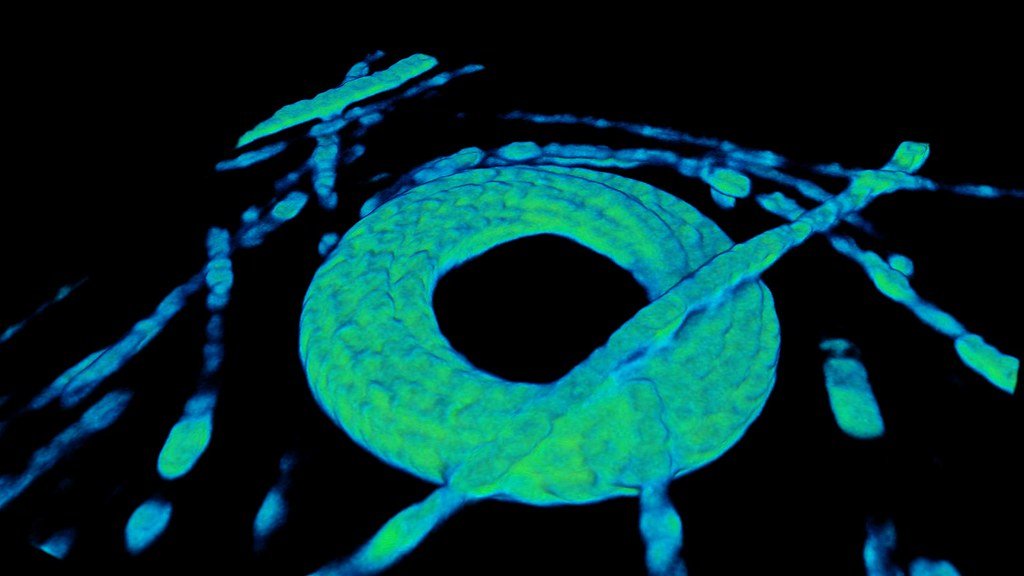Microbial discovery and classification is a rapidly growing field with a lot of potential. Thanks to the advent of high-throughput sequencing technologies, we are now able to study and classify microbes in unprecedented detail. This has led to a host of applications in food safety, environmental monitoring, and healthcare. In this blog post, we will discuss the future of microbial discovery and how you can benefit from it.
Innovations in Microbial Identification and Classification
Microbial identification has always been a challenge due to the vast array of microbial species. However, developments in both microbial identification methods and microbial classification have made this field more efficient.
Traditional microbial identification methods rely on traditional biochemical tests, which can be time consuming and often inaccurate. In contrast, molecular methods use DNA sequence data to identify microbes. Molecular methods are fast, precise, and can be used on a small sample size. Molecular methodologies also allow for the differentiation of closely related strains of microbes.
Microbial classification is another area where development has occurred rapidly over the past few decades. Traditional classifications relied on morphology or chemical properties of microorganisms. However, this approach is inadequate because different taxa may have similar morphology or chemical properties, but they may belong to different taxonomic categories. In contrast, modern phylogenetic methodologies employ genetic distance to differentiate between microorganisms. Based on their phylogenetic relationships, organisms are assigned to one of several taxonomic categories (e.g., bacteria, Archaea). This approach is more accurate than traditional morphological or chemical classifications because it takes into account the evolutionary history of an organism.
The Impact of Emerging Technologies on Microbial Studies
Microbial research has been steadily advancing over the years thanks to the utilization of emerging technologies. In the past, researchers relied on traditional methods such as culturing and petri dishes in order to study microbes, but this is no longer the case.
Nowadays, researchers are able to study microbes using advanced sequencing techniques such as whole-genome sequencing and RNA-seq. This allows them to gain a much more detailed understanding of how these organisms work and can potentially identify new disease-causing agents or pathways.
Thanks to these advances, microbial research is now leading the way in discovering new types of treatments for various diseases. Researchers are also able to use these technologies to improve our understanding of how organisms interact with each other and their environment. This knowledge is essential for developing effective policies and managing resources responsibly, both in terms of clean water supplies and sustainable agriculture.
The Role of Big Data in Advancements in Microbial Knowledge
Microbial discoveries are becoming increasingly complex and diverse, which is making it difficult to classify and understand them. As a result, big data is playing an important role in advances in microbial knowledge.
One major application of big data is its ability to identify patterns and relationships in large sets of data. This has been particularly helpful in understanding how microbes interact with each other and their environment. By analyzing large sets of sample data, scientists have been able to identify new strains of bacteria and even new species of microbes.
Another benefit of big data is its ability to speed up the process of discovery. By pooling resources from various institutions, investigators can more quickly identify patterns and trends in their data sets. This helps them better understand how microbes function in the environment and make more informed decisions about how to protect public health.
The Promise of Synthetic Biology for the Study of Microorganisms
Synthetic biology is a rapidly growing field of science that uses design and engineering approaches to build or modify basic biological molecules, such as enzymes, hormones, or cells. This technology has the potential to revolutionize our understanding of microbial diversity and function.
One of the biggest benefits of synthetic biology is its ability to study microbes in conditions that are not possible with traditional methods. For example, by controlling the environment inside microfluidic devices, researchers can study microbes under conditions that mimics their natural environment—a huge boon for studying how these organisms interact with each other and their surroundings.
But synthetic biology isn’t just about studying microbes in new and innovative ways; it’s also about restoring broken microbial systems. By crafting genetic repair tools using synthetic biology, we can help restore damaged ecosystems—a critical step in mitigating environmental damage caused by human activities like pollution or deforestation.
Overall, synthetic biology has the potential to change our understanding of microbial diversity and function on an unprecedented scale. It will allow us to explore uncharted territory, restore broken systems, and even create entirely new species of microbes. The future looks bright for this exciting field!
Unlocking the Potential of Undiscovered Microbial Species
Microbial discovery is an important avenue for advancing our understanding of microbial life and its potential roles in human health and the environment. However, over time, the number of microbial species that have been identified has plateaued. In order to unlock the potential of undiscovered microbial species, scientists must develop new methods for classification and detection.
One method that is being explored is deep sequencing. This technique allows scientists to sequence the entire genome of a particular microbe. This information can help them identify specific genes and characteristics that are unique to that microbe. It can also help them to understand how those genes function in terms of health or environmental impacts.
Another method that is being used more frequently is metagenomics. Metagenomics refers to the analysis of samples taken from environments other than humans or animals. This includes everything from wastewater treatment plants to soil samples. By analyzing these samples, scientists can identify patterns in the distribution and composition of microbes present. This information can be used to improve our understanding of how different factors affect microbial populations.
Both deep sequencing and metagenomics are essential tools for unlocking the potential of undiscovered microbial species. By using these techniques, we will be able to better understand how microbes interact with each other and their environment, which will lead us closer to identifying new sources of health or environmental risks.
The Importance of International Collaboration in Microbial Research
Microbial research is becoming increasingly collaborative and international. This is driven by the rapid changes in the world, which require scientists to work together to identify new microbial strains and understand their roles in complex systems.
Collaborative research has many benefits: it can speed up the identification of new strains and lead to greater understanding of how they interact with each other and their environment. It also allows scientists to pool resources and share expertise, which can lead to breakthroughs in microbial discovery and classification.
The importance of international collaboration cannot be overstated. In fact, according to a study published in PLOS One, collaborative research is more effective than single-team research when it comes to identifying novel microbes. Collaborative research also leads to improved scientific knowledge and better outcomes for society as a whole.
The Ethics of Microbial Exploration in a Rapidly Changing World
Microbial discovery and classification is a rapidly changing field with new technologies making it possible to explore previously inaccessible environments. As microbes move around the environment, our understanding of their interactions and potential roles in global warming and other environmental issues expands.
As microbial exploration becomes more widespread, there are also questions about the ethics of conducting research in these novel environments. Some scientists argue that we should respect microbial life even if we don’t understand all of its complexities, while others believe that any form of microbial life should be classified and studied as carefully as any other organism. This debate highlights the importance of balancing scientific curiosity with ethical considerations in the rapidly changing world of microbial discovery.
The Challenges of Preserving Biodiversity in a Rapidly Changing Microbial Landscape
The rapid pace of microbial evolution and discovery is posing unique challenges to researchers who are tasked with managing and preserving biodiversity. Scientists have long relied on physical, chemical, and genetic markers to identify and classify microbes. However, this traditional method of classification is becoming increasingly difficult to maintain as the microbial landscape changes.
For example, scientists used to rely on species-level definitions to identify different types of bacteria. However, over the last few decades, researchers have discovered new strains of bacteria that fall outside of traditional taxonomic boundaries. As a result, scientists are now required to use more specific definitions in order to accurately classify and study microbial populations.
This trend is likely to continue as we learn more about the underlying mechanisms behind microbial diversity and evolution. For example, recent studies have shown that certain microbes can adapt quickly to changing environmental conditions. This ability has led some scientists to propose redefining the concept of a “species” in order to reflect these new realities.
Despite these challenges, researchers are still working hard to preserve biodiversity through the development of new methods and technologies. For example, genomic sequencing technologies are allowing researchers to explore the full genetic makeup of various microbes in unprecedented detail. This information is helping them better understand how these organisms interact with each other and their environment – ultimately leading to improved management strategies for both biodiversity conservation and research purposes.
The Role of Citizen Science in the Discovery and Classification of Microorganisms
Citizen science is a method of scientific research where members of the public are involved in the data collection and analysis process. It has been heralded as one of the most powerful tools for acquiring new knowledge about our environment and improving our understanding of complex systems.
One example of citizen science is microbial discovery and classification, which relies on the contributions of volunteers to collect samples from unexpected locations and submit them to laboratories for identification. Microbial discovery is important because it allows us to track changes in our environment over time, identify new viruses and bacteria, and monitor outbreaks. Classification is important because it helps us understand the diversity of microbes present in an environment, assigns them taxonomic ranks, and determines their potential health risks.
There are several ways that citizen science can help advance microbial discovery and classification:
– recruitment: By reaching out to educators, scientists, outdoors enthusiasts, tech-savvy youth, etc., citizen science organizations can generate a pool of enthusiastic volunteers who are ready and willing to participate in microbial discovery projects.
– data sharing: Citizen scientists who contribute data to a project can ensure that their data is collected systematically and properly labeled. This information can then be used to improve future projects by providing researchers with a more comprehensive snapshot of environmental conditions at various points in time.
– collaboration: Citizen science projects often involve collaborations between different institutions or groups of researchers. By working together, groups can better leverage their resources (e.g., laboratory expertise) and increase the likelihood of achieving successful results.
– transparency: By publishing project findings and data, citizen science organizations can ensure that their research is accessible to the public and other researchers. This transparency can help to build trust among the public and scientists, foster a community of scientific explorers, and promote innovation in the field.
The Importance of Education and Public Awareness in Microbial Research and Discovery
Public awareness and education play an important role in microbial research and discovery. People who are educated about the importance of microbes and their role in the world around them are more likely to support microbial research and innovation.
Microbial researchers need public support if they are to continue discovering new microbes and understanding how they function in our environment. Education can help increase people’s awareness of the importance of microbial biodiversity, encourage environmental stewardship, and promote better sanitation practices. It can also help people understand the role of microbes in food production and manufacturing processes, and develop ways to make use of these organisms in industrial processes.
One way that microbial researchers can improve public awareness is by holding public lectures or workshops. They can also produce media content that covers topics such as antibiotic resistance, the microbiome, or biotechnology. Another way is to establish partnerships with other organizations that can share their educational materials with a wider audience.
There is still much that needs to be done to ensure that all people have a basic understanding of the value of microbes in our world. But through education, we can begin to build a foundation for future discoveries that will improve our quality of life both now and into the future.







